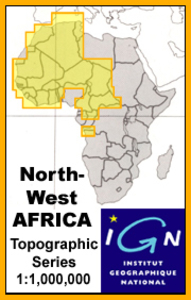-
Home
-
Contributors
-
International
-
Account
-
Information
More From Contributor
- including a Royal Marine sniper & a veteran operator in the SAS
- as well as serving personnel & their families, physicians, therapists & psychiatrists, Aftershock looks beyond the labels of shell shock & post-traumatic stress disorder (PTSD) to get to the heart of today`s post-conflict experience. It pursues the question that the military are so reluctant to ask: why do people who are trained to thrive within the theatre of war so often find themselves ill-prepared for peace? As a new generation of battle-scarred troops begins to lay their weapons down, Aftershock offers an empathetic yet hard-hitting account of the hidden cost of conflict. And its message is one that has profound implications, not just for the military, but for anyone with an interest in how we experience trauma & survive. ...
- Pays Ida-Outanane region in a series of GPS compatible maps at 1:160, 000 published by EWP & West Col Productions & covering ...
- a boar hunt in winter, the wedding of a young neighbour & the magic of the full-moon festival when the gods descend to dance amongst the villagers. ...
- ” Bulletin of British Ecological ...

Agadez IGN Map
road distances are indicated on main routes. Symbols show airports, mosques, mines, oil and gas fields, lighthouses, ruins and significant isolated buildings. Administrative boundaries are marked and latitude and longitude lines are drawn at 1° intervals, with further margin ticks at 1’ intervals. The map legend is in French only on some sheets, and in English and French on others.*The International Map of the World was a project conceived in the early 20th century to compile a world map series at 1:1, 000, 000 through the efforts of participating nations. The value of the program has declined since 1970 and the IMW is no longer regarded as an active international series.
This page now acts as a permanent archive for this product. Add more information using the comments box below to ensure it can still be found by future generations.
Use our search facility to see if it is available from an alternative contributor.
- External links may include paid for promotion
- Availability: Out Of Stock
- Supplier: Stanfords
- SKU: 3282110135934
Product Description
One of the titles in a series of topographic maps covering much of north-west Africa, produced as part of the IMW* project in 1960’s. Each map covers an area spanning 6° in longitude & 4° in latitude. There is some variation in colouring & the depiction of terrain, but hill-shading, spot heights & contours are used to show the general relief. Additional graphics show features such as dunes, rock outcrops, cliffs, sand areas, escarpments, marshes, seasonal lakes & watercourses, & areas liable to flooding. Bathymetric contours are also included. Communications detail
Includes:: roads, major trails & railways, although there is some inconsistency in colouring & the extent of classification, e.g. not all maps distinguish seasonal roads. On most maps intermediate road distances are indicated on main routes. Symbols show airports, mosques, mines, oil & gas fields, lighthouses, ruins & significant isolated buildings. Administrative boundaries are marked & latitude & longitude lines are drawn at 1° intervals, with further margin ticks at 1’ intervals. The map legend is in French only on some sheets, & in English & French on others.* The International Map of the World was a project conceived in the early 20th century to compile a world map series at 1:1, 000, 000 through the efforts of participating nations. The value of the program has declined since 1970 & the IMW is no longer regarded as an active international series.
Reviews/Comments
Add New
Intelligent Comparison
We couldn't find anything!
Perhaps this product's unique.... Or perhaps we are still looking for comparisons!
Click to bump this page and we'll hurry up.
Price History
Vouchers
Do you know a voucher code for this product or supplier? Add it to Insights for others to use.


 United Kingdom
United Kingdom
 France
France
 Germany
Germany
 Netherlands
Netherlands
 Sweden
Sweden
 USA
USA
 Italy
Italy
 Spain
Spain










 Denmark
Denmark